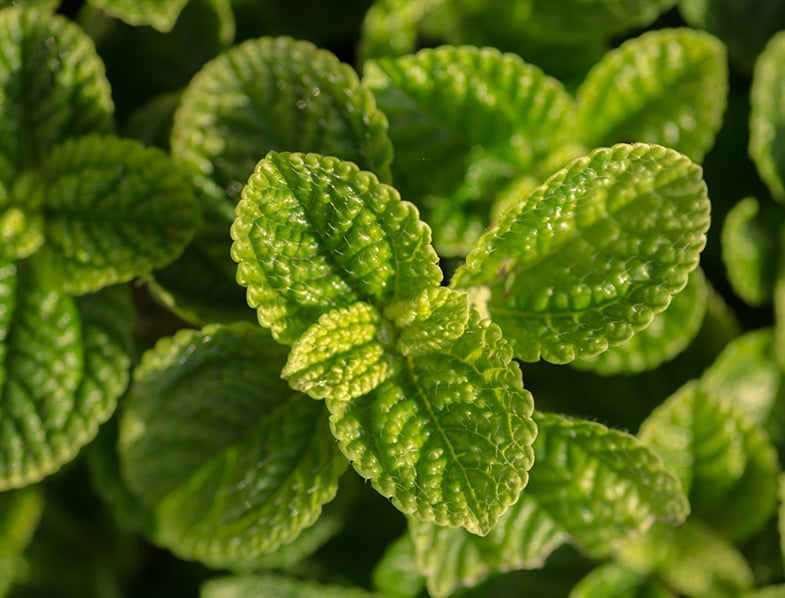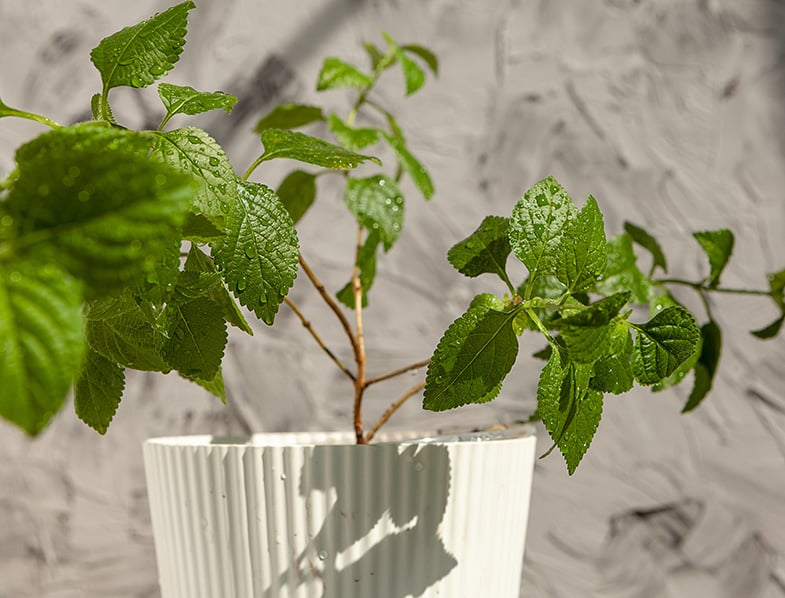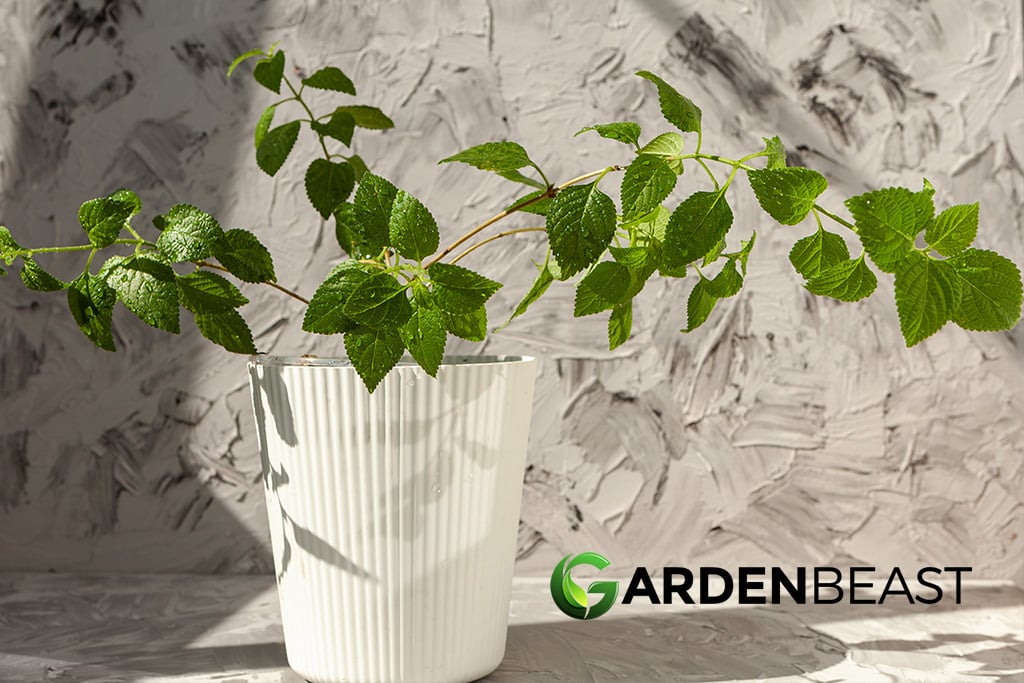Houseplants are a great way to bring nature into your home and brighten your surroundings at the same time. If you are looking for a low effort plant for your home or office, consider picking up a Plectranthus australis.
This simple plant easily thrives indoors and has a visually appealing look that will add a bit of cheer to any room. The stems of the Swedish ivy plant grow up before they cascade gracefully just like a tumbling waterfall. For those who don’t have much table space, you can pop this plant in a basket for an extra touch of green anywhere you desire.
The Swedish ivy plant can also be planted outdoors. It will naturally grow as a carpet plant under trees, hence the common name Creeping Charlie.
The Creeping Charlie is revered for its beautiful foliage. It has gently rounded leaves that are topped by scalloped edges. Many of the variations even have variegated leaves which adds another dimension of charm to this already popular plant.
Not only is it easy to care for, but it will also develop stunning flowers with proper care. It has an average life span of four to five years which means you can enjoy the Plectranthus australis for many years before you need to replace it.
About Swedish Ivy
- The Swedish ivy plant is commonly referred to as Creeping Charlie.
- Some Plectranthus australis plants will generate white flowers in late spring.
- Most Swedish ivy plants have scalloped-edged leaves.
- It is typical for a Creeping Charlie plant to reach lengths of three to four feet.
- Too much nitrogen can stop the Plectranthus australis from producing flowers.
- Swedish ivy plants should be fertilized with a 20-20-20 balanced houseplant fertilizer.
- Creeping Charlie plants need only minimal water in the dormant winter seasons.
- For new gardeners, the Plectranthus australis easy a great way to learn to garden.
- Swedish ivy plants love humidity and will thrive in warm climates.
- Many proper owners love the hanging vines of the Creeping Charlie plant.
Swedish Ivy Features: An Overview
- The botanical name of Swedish ivy is Plectranthus australis
- Swedish ivy most often presents with variegated leaves.
- Swedish ivy plants thrive when cultivated indoors.
- Most Swedish ivy is displayed in hanging baskets.
- Plectranthus australis has a life span of three to five years on average.
- It is common for Swedish ivy plants to produce pale lavender blooms in the early summer.
- Creeping Charlie plants have variegated leaves that are round.
- The cold is not suitable for the Plectranthus australis plant.
- A peat moss based potting soil is best for the Swedish ivy.
- Creeping Charlie plants need a moderate amount of light, but never direct sunlight.
- You can make new Plectranthus australis plants with stem cuttings.
- The Swedish ivy plant usually blooms in the summer.
- The Creeping Charlie plant can be propagated with cuttings or division.

Growing Swedish Ivy
Growing the Swedish ivy plant is very easy and there is little to no upkeep required once it becomes established. It loves average room temperatures and can also thrive in warm outdoor climates. A lot of property owners fill their balconies with the Swedish ivy plant because it adds a touch of easy elegance.
Minimal pruning is needed to help the plant keep its shape and to encourage healthy growth. You can remove whole branches without worrying about long term damage to plant or pruning shock. Moderate humidity is ideal for the Swedish ivy plant, and it should also be fertilized on a regular schedule.
Make sure that your Creeping Charlie plant gets plenty of light, just make sure it is not direct. If you notice the leaves are your plant are starting to wilt and droop, it is a sign that it is getting way too much light.
The ivy is most comfortable at temperatures that range between 60 degrees and 75 degrees. The Creeping Charlie is very intolerant to cold however and any temperature at or below freezing will result in plant death. The best soil is a potting mix that is based on peat moss. If that is not available, any high-quality potting mix will also suffice.
Watering Swedish Ivy
Watering the Creeping Charlie plant is a no brainer. It needs moist soil during the spring summer and fall seasons but less water in the winter. Most houseplants consume the most water during the growing season and the Plectranthus australis is no different. The winter is typically a dormant season for this plant, as such it will not need to be watered as often, but it should never be allowed to become dry.
The Swedish ivy should be fertilized only during the growing seasons. A schedule of feeding once every three weeks with a balanced fertilizer specifically for houseplants is the best. They do not need fertilizer in the winter months as the plant will be dormant.
Always check to make sure that your Swedish ivy is not getting too much nitrogen in its fertilizer. A high concentration can prevent your plant from blooming, if this happens, simply use a low-nitrogen fertilizer during the next growing season. This plant loves humidity but is equally happy in regular climates. If your home or area is overly dry, adding a humidifier to the room and misting your plant on occasion will keep its leave looking perky.

Propagating Swedish Ivy
The Swedish ivy plant can be propagated by cutting tips from the stem. The best time to take cuttings is right after the Swedish ivy plant blooms in the summer. Enjoy your regular summer bloom and once the flowers start to fade, simply pinch the off the stem tips.
Take the tips of the Swedish ivy plant stems and place them in fresh but very moist potting soil to root.
Cover them with a plastic bag or move them indoors until they are able to become established. It is also possible to propagate Swedish ivy plants through the division method, but it is much more time consuming and will not always result in healthy plants.
The glossy leaves in the Swedish ivy plant paired with Tubular mauve or white flowers make it a dramatically beautiful plant to add to any home garden. It loves a loamy mix, and you can even add in some perlite to increase the drainage in the soil.
- 2 Plectranthus Swedish Ivy Plants Live For Planting In 4 Inches Pot, Purple Swedish Ivy Mint Herb Plants, Live Swedish Ivy Houseplants
- Grown as a houseplant or outdoor annual. It's not cold-hardy and is commonly cultivated in USDA Hardiness Zones 10-12
- Prefers well-draining soils in full sun to partial sun
- Serch terms: plectranthus swedish ivy plant live houseplants, live swedish ivy plant live indoor, house plants indoors live swedish ivy, swedish ivy pot plant, creeping charlie swedish ivy plant, fragrant swedish ivy live plant, live swedish ivy hanging plant, swedish ivy houseplant, live plants indoor swedish ivy plectranthus
- 1 Pot 2 Plectranthus Swedish Ivy Plants Size 4-8 Inc - Green Swedish Ivy Houseplant in 4 Inch Pot
- Thrives in USDA hardiness zones 10-11 and can be grown indoors in cooler areas
- Trailing habit: great for hanging baskets, containers, and ground cover
- It prefers well-draining soil
- Full sun to partial shade
- 1 Plectranthus Swedish Ivy Plants Live In 6 Inch Pot, Variegated Swedish Ivy Live Plants
- Grown as a houseplant or outdoor annual. It's not cold-hardy and is commonly cultivated in USDA Hardiness Zones 10-12
- Prefers well-draining soils in full sun to partial sun
- Plectranthus swedish ivy plant live houseplants, live swedish ivy plant live indoor, house plants indoors live swedish ivy, swedish ivy pot plant, creeping charlie swedish ivy plant, fragrant swedish ivy live plant, live swedish ivy hanging plant, swedish ivy houseplant, live plants indoor swedish ivy plectranthus
Last update on 2024-10-11 / Affiliate links / Images from Amazon Product Advertising API
The plant is fast-growing, so you can easily cover your whole porch or room after just one growing season. For new plants and mature plants alike, a steady temperature will encourage steady growth and healthy foliage. Once the plant has matured, let the soil dry slightly between each watering session.
It is important that each plant has proper drainage to prevent root rot and soggy soil. If you feel that your plants are getting a bit crowded or that they are growing too fast, simply pinch off the flowers after each bloom. This will slow down growth without harming your existing mature plants.
In Conclusion
The Plectranthus australis is best suited to growing in a hanging basket but they are also able to live in pots. When planting your ivy, you will need to refresh the soil every year. If the plant starts to wilt, then you can repot more often.
Using a fresh peat-based potting soil will encourage growth and keep your Creeping Charlie plant properly nourished. There are a lot of different varieties of the Creeping Charlie plant. Most often they are a single color- green. However, Variegata cultivar has risen in popularity in recent years. The white markings on the edges of the leaves if this variety lends it a unique look that adds class to any home. Some varieties are chosen not only for their attractive foliage but also for the aromatic smell.
The Swedish ivy plant is ideal for new gardeners. It does not require any type of special care nor does it have complicated watering instructions. In addition, it is easy to propagate and has a generally long lifespan of as much as five years. It doesn’t have any inherent issues with disease or pests, but you will have to keep an eye out for common house plant dangers.
Most houseplants can fall victim to mealybugs. This infestation is easy to spot as it forms a strange white cast on the leaves and stems of houseplants. You can treat this infestation with a gentle insecticide, or by wiping the affected areas down with cotton. Spider mites are a less common issue that may pop up from time to time.
You can spot these by the webby mass under leaves or if you notice some leaves suddenly start to become pale. These can be wiped away or treated with a gentle insecticide.




1 Comment
Hollie,
Thank you for your insight and experience. This is the first houseplant i have had in many years. My wife always has the green thumb but it out time for some green love in the house. Keep spreading the health!
Tim